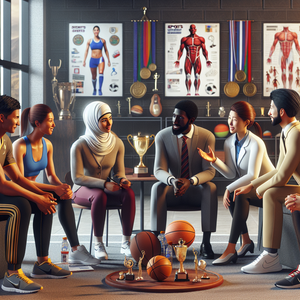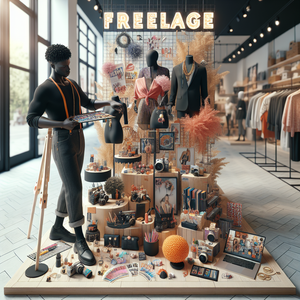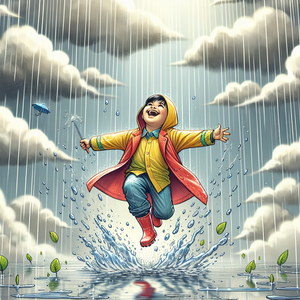
Discover 15 Exciting Careers in Visual Studies: Insights, Requirements, and Opportunities
Visual Studies is an engaging and multifaceted field that merges creativity with critical thinking and cultural exploration. For those with a passion for the arts, it presents an array of career paths. Graduates in Visual Arts and related disciplines can find positions in education, curation, design, and media, among others. The increasing reliance on digital platforms and the significance of visual communication across industries have heightened the demand for skilled professionals in this area. From Art Directors to Art Educators and Curators, every role contributes to the evolving landscape of visual culture and its interaction with society. This article explores 15 dynamic careers within Visual Studies, providing insights into their specific tasks, educational requirements, and contributions to the field, all backed by industry trends and projections.
Job Summaries:
Art Director:
- Art Directors shape the visual aspects of projects in advertising, publishing, and media, ensuring the aesthetic aligns with brand messaging.
- They craft visual concepts, oversee design teams, and refine project drafts.
- A Bachelor’s degree in Fine Arts or Design, along with a compelling portfolio showcasing prior work, is required.
- They create visually striking content, linking creativity with strategic communication to enhance brand identity.
Graphic Designer:
- Graphic Designers produce visual content for both print and digital media, including logos and marketing materials.
- They utilize design software to create compelling visuals that communicate brand narratives effectively.
- A degree in Graphic Design or a similar field, along with proficiency in tools like Adobe Creative Suite, is required.
- Their designs are crucial for clear visual communication, influencing public perceptions and engagement.
Art Educator:
- Art Educators impart artistic skills and knowledge in various settings, from schools to community programs.
- They design curricula, motivate creativity, and assess student development.
- A Bachelor’s degree in Art Education and relevant teaching credentials are required.
- They cultivate future generations of artists, instilling an appreciation for the arts and fostering creativity.
Curator:
- Curators manage art collections in galleries and museums, selecting and arranging artworks for exhibitions.
- They research art pieces, write exhibition catalogs, and engage audiences to foster an appreciation of visual arts.
- An advanced degree in Art History or Museum Studies is generally required.
- They serve as custodians of cultural heritage, enhancing public knowledge through thoughtfully curated displays.
Multimedia Artist/Animator:
- These professionals create animations and visual effects for film, video games, and online media.
- They develop characters and narratives using specialized software, blending artistic vision with technical expertise.
- A degree in Animation or Graphic Design, along with a robust portfolio, is required.
- Their work is essential in narrative development, utilizing innovative visuals to enhance storytelling.
Art Historian:
- Art Historians examine artworks within historical frameworks, contributing to the discourse on visual culture.
- They conduct research, publish articles, and teach at academic institutions.
- A Ph.D. in Art History or a related field is required.
- Their analyses enrich our understanding of art and its societal implications, influencing contemporary artistic practices.
Photographer:
- Photographers capture images that convey stories or messages across numerous sectors like fashion and journalism.
- They manage camera operations, lighting setups, and photo editing processes.
- A degree in Photography or Visual Arts can be advantageous, although a strong portfolio is paramount.
- They document and represent cultural narratives visually, playing a vital role in shaping public perception.
Art Consultant:
- Art Consultants guide clients in acquiring and managing art collections.
- They boost visibility for both collectors and corporations.
- They offer insights into market trends.
- They assist clients in curating collections.
- A strong knowledge of art history and business is required.
- This knowledge is often backed by a degree in Art Management.
- They enhance art appreciation and investment.
- They forge connections between art and commerce.
Set Designer:
- Set Designers construct physical environments for film, theater, and television productions.
- They collaborate with directors to realize scripts through immersive set designs.
- A degree in Theater Arts or Design and an impressive portfolio are required.
- They enrich storytelling, creating visually engaging settings that enhance audience experiences.
Art Therapist:
- Art Therapists leverage artistic expression as a therapeutic medium to support emotional healing.
- They conduct therapeutic art sessions and create personalized treatment plans.
- A Master’s degree in Art Therapy and state licensure are required.
- They highlight the therapeutic benefits of art, merging psychology and creativity for personal development.
Fashion Designer:
- Fashion Designers conceive and create garments and accessories, balancing aesthetics with practicality.
- They research fashion trends, sketch designs, and oversee production processes.
- A degree in Fashion Design and a substantial portfolio are required.
- They shape visual culture in fashion, significantly influencing consumer trends and styles.
Interior Designer:
- Interior Designers plan and decorate spaces to ensure both functionality and visual appeal.
- They collaborate with clients to create personalized environments that reflect their tastes.
- A degree in Interior Design or Architecture is required.
- Their designs impact the aesthetic and usability of spaces, enriching the experiences of inhabitants and visitors alike.
Visual Effects Artist:
- Visual Effects Artists create stunning visuals for films and video games, enhancing narratives through digital effects.
- They use software like Maya or After Effects to produce high-quality visual content.
- A strong artistic foundation and proficiency in relevant software are required.
- They play an integral role in modern storytelling, adding depth and realism to visual narratives.
Art Critic/Journalist:
- Art Critics and Journalists review art exhibitions and write articles that shape public discourse on visual culture.
- They analyze artworks and provide commentary on trends and exhibitions.
- A degree in Journalism or Art History can be beneficial.
- Their insights stimulate discussions surrounding art, influencing public perceptions and appreciation.
Art Conservator:
- Art Conservators work to preserve and restore artworks, ensuring their longevity for future generations.
- They apply conservation techniques to safeguard and enhance artworks.
- A Master’s degree in Conservation or a related field, along with practical experience, is required.
- They protect cultural heritage, ensuring that artworks remain accessible and valued by future audiences.
The landscape of Visual Studies is rich with diverse career opportunities catering to various interests and skill sets. Each of these 15 vibrant careers plays a unique role in the ever-evolving visual culture, showcasing the intersection of creativity and critical analysis in professional settings. Whether your passion lies in creation, education, or consultancy, a fulfilling path awaits you in this dynamic field. As technology and societal needs continue to shift, the scope of Visual Studies will expand, inviting fresh talents to redefine visual communication and artistic expression. Explore these career options further and envision how you might contribute to this exciting domain.
Explore More Jobs

